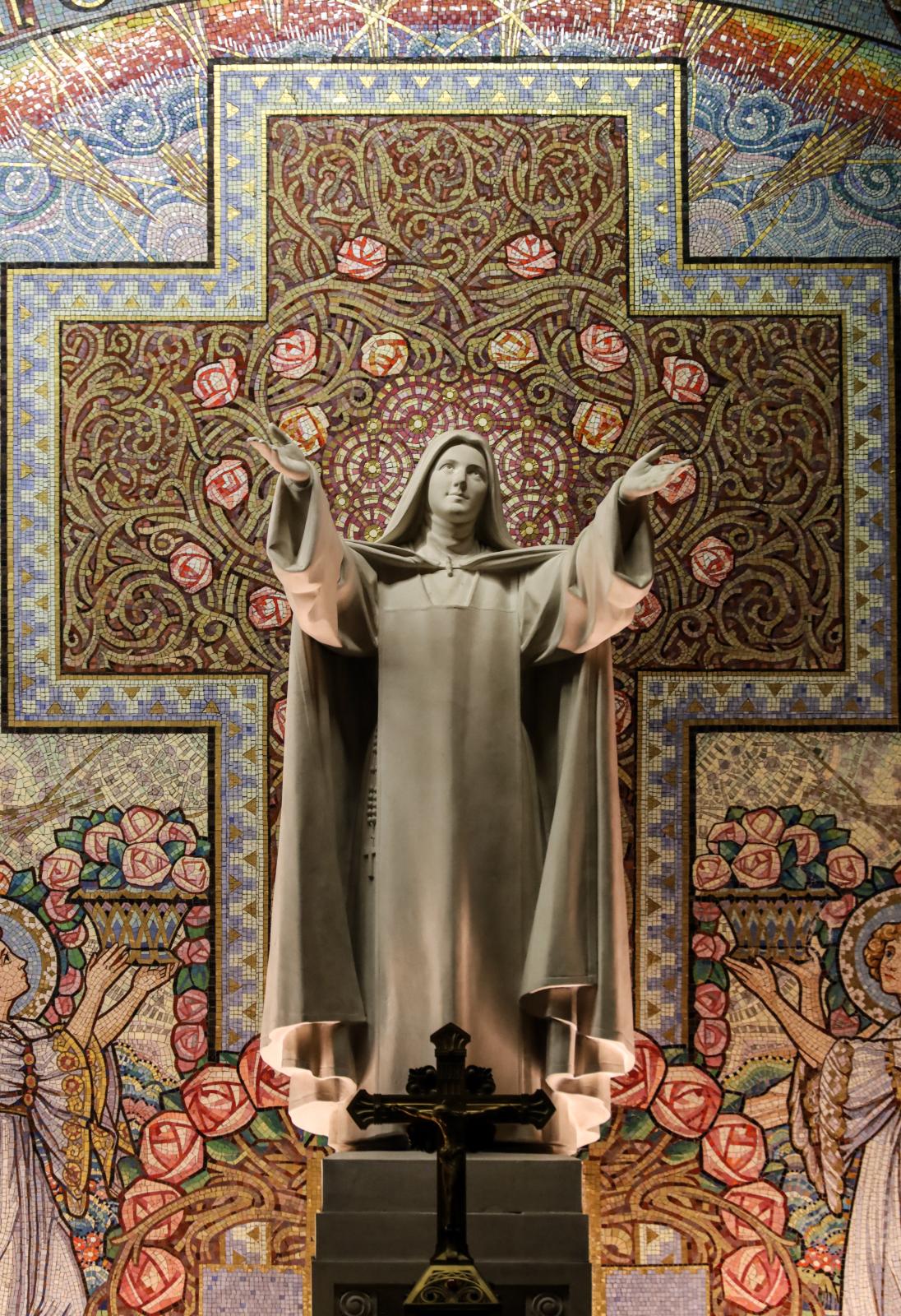By a Carmelite, Notting Hill Carmel
The name of St Thérèse of Lisieux is almost synonymous with her well-known ‘Little Way of Spiritual Childhood’.
To many, this could only sound sentimental. However, to those who explore this ‘way’ soon find that Thérèse had understood in a profound way those words of Jesus himself in the Gospel:
Unless you become like little children, you will not enter the Kingdom of Heaven.
St Thérèse’s Feast day is kept on October 1st. The day before this is the Feast of St Jerome, Doctor of the Church, who had one of the most brilliant minds in the history of the Church, and opened up the scriptures by his translation of the Bible and his commentaries on the word of God. How is that Thérèse is also now a Doctor of the Church? She had very a limited education and so little experience outside of the convent where she had lived from the age of 15 till her death at the age of 24. What has she given to the Church?
It was Pope Paul VI who put it into words: ‘Thérèse re-discovered the heart of the Church.’
For a long time before her birth the heresy of Jansenism had crippled the relationship of the faithful with God, depicting him as a severe and exacting authority figure, whose wrath must be placated. Then came the years during which the French Revolution had endeavoured to root out of France everything of its long Christian heritage, in favour of a so-called ‘Age of Reason’. Even the most faithful believers in the Church had a difficult time in opposing this radical atheism of the Rationalists whilst their religious life was sadly deformed by the over-righteous appearance of the Jansenists, whose teachings have been summed up as ‘harder is holier’. This led to stressing severe penitential practices, and heroic deeds as being the necessary norm for sanctity.
Into this world comes Thérèse. She was fortunate in having a warm and loving family. However, even from the time of her 1st Holy Communion, a day of special grace for her, she was painfully aware of her own weakness and limitations, and this led her towards a sense of discouragement, feeling that she could never reach the high standards of sanctity. But she was already strong enough to make a firm resolution never to give in to this discouragement. Instead, she would place all her trust in the goodness of God, who would do in her what she could not do of herself. It was this practical trust in God which was the key to her ‘Little Way’, causing her to remain always a ‘little child of the mercy of God.’
Her path through her short life was by no means easy. Her last years brought her to intense physical suffering, when she was diagnosed with Tuberculosis. She had to endure the relentless progress of this killer disease without any of our modern aids at pain control or relief. But much more distressing was the deep interior darkness which enveloped her in an abyss which obliterated her sense of faith in God, and Heaven. Body and soul were in agony. The one thing that remained was her profound trust in God, in spite of everything to the contrary
In our modern world there are so many grave problems, in the World, in the Church, in religious life. Thérèse tells us not to be discouraged that our best efforts seem inadequate to deal with any of these areas of concern. She does not invite us to mere optimism, but rather to trust in the goodness of God. After all, did she not declare that her own vocation was to be ‘Love in the heart of the Church’ and as St John has said: ‘This is the love I mean: not our love for God but God’s love for us.’
She had declared her intention to ‘spend her Heaven doing good on earth’. Is she not leading the way into the forthcoming ‘Holy Year’, in which Pope Francis wishes us to be witnesses to hope in our troubled world?
